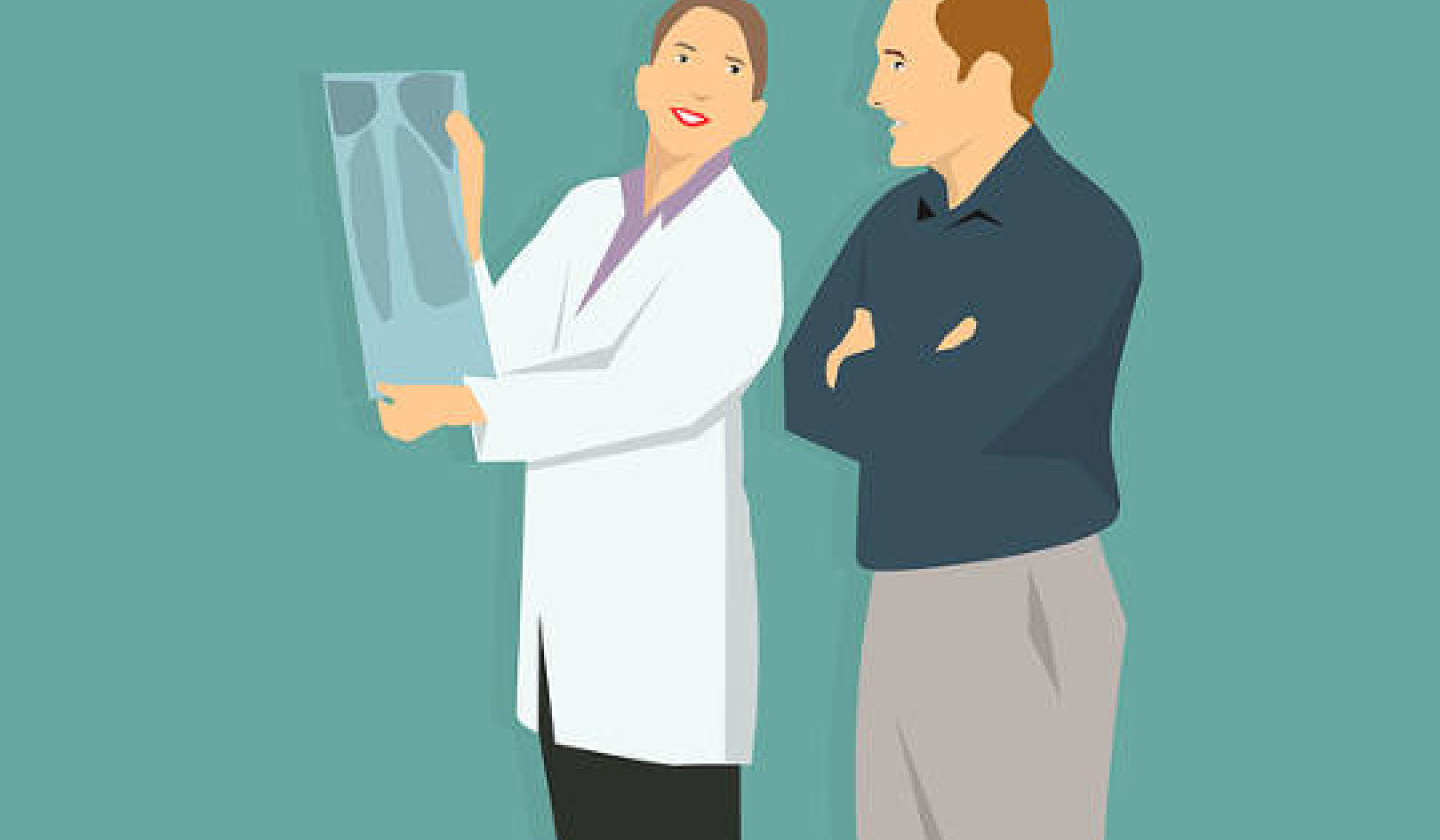
Image by Milius007
One of the most fascinating aspects of the human body is the fact that there are so many reflexology maps found on different parts of the body. By reading the zones that are located on the surface of the skin on different parts of the body we can discover incipient health disturbances, which may otherwise remain hidden, before they become chronic problems. Most of the time these are not severe problems, unless we ignore the signs.
For example, a pimple on the face on the right side of the nose, an itching on the right shoulder, or a red spot on the lower right side of the rib cage on the front of the torso—these are all signs that the liver and gallbladder are stressed. If we ignore these signs and continue an inappropriate lifestyle consisting of fatty meat and booze, too much anger, and not enough rest, the signs of distress will become more blatant. Eventually the pimple will disappear, but the pain on the back of the shoulder blade will increase to the point that the gallbladder will need emergency medical intervention.
The Reflexology Maps: Using Common Sense and Intuition
Reflexology presents us with an open book on one’s state of health that is waiting to be read, thus awakening us to our full human potential for self-healing. Reading the reflexology maps found at different locations on the body means understanding what’s going on at a deeper level.
To make optimum use of this great self-healing resource, intuition comes into play as we read the maps. This doesn’t mean that common sense is disregarded—we need our analytic abilities to sort out our perceptions and findings to give our treatments useful direction. It’s the combination of both the heart and the brain that opens us to new dimensions of treatment. But intuition plays a far greater role in healing than one might imagine.
Let’s consider some new brain research by German physicist Gunther Haffelder. He proved that the analytical side of the brain, located in the left hemisphere, has a processing speed of about 20,000 bits per second in a sequential mode, while the right hemisphere, which is responsible for our feelings and intuitions, processes data at a speed of 60,000,000,000 bits per second in parallel with the left hemisphere. This proves that intuition has a formidable role in cognition, far beyond the esoteric or aesthetic.
Whether one’s orientation tends more toward the rational or more toward the intuitive, reflexology has advantages for both types of people. Rationalists may understandably reject the spiritual aspects of the zones on the hands, but they are fascinated by the neurological elegance of the dermatomes and sclerotomes.
Many intuitive people feel that the scientific explanations of the zones on the back or on the ears do not conflict with the concept of holism and the fact that we possess microcosms within the macrocosm that is the body. With reflexology, rationalists discover a whole world that is not rationally explainable, while intuitives learn that the practice of reflexology requires a rational component.
We Are Holistic Creatures
Reflexology proves that we are holistic creatures, and every attempt to separate parts from other parts causes problems. The head is connected to the toes, and it gives them orders via the nerves as to what movement to perform. The pancreas produces the hormone insulin, which reaches from the tip of the nose to the end of the little toes.
The holistic principle extends even further. In addition to the holism of the body there is a coherence between the mind and the soul. When we are excited we feel it all over. Even the hair gets a better shine. On the other hand, depression is clearly visible in one’s posture and face. If you’re depressed you can do whatever you want to improve your hair, but it will still remain dull.
There are many more examples of the holism of the human being. Those who live their lives with a sense of purpose seem to sparkle out of every cell, and they are obviously satisfied with life. It is equally obvious when someone is unhappy and living without a sense of purpose. And so the expressions of a person are evidence that every part of a human being is interdependent with every other part. Any disturbance within will have an effect on the whole body, and this is where the skin comes into play, as it provides us with a system whereby we can assess the condition of our inner organs.
Reflexology allows us to observe on the outside what happens on the inside. Now that red spot on the shoulder blade has a meaning that we can interpret as a dysfunction of the gallbladder. Our intuition might have already told us this long before we were consciously aware of it, but now we can back up our intuition by reading the maps and using our rational sense to recognize the problem.
A Map of Abundance from the Head to the Toes
Maps are not the actual territory they describe, but they do orient us to an area. Above all, maps are most useful when they help us find our way. As a map of human health reflexology shows us the location of the organs on our skin and how to get in contact with them.
If we possessed only one of these systems it would be a stroke of luck, but we are equipped with many of these maps of health, microcosms of the macrocosm, and every one of them has its own specialty. To express it differently: With a satellite fertility map of a geographic area we are able to decide whether to grow apples or grain there. But to drive from New York to L.A., only a road map will bring us there efficiently, while a completely different kind of map is needed to undertake a mountain hike in the Rockies.
We can understand the maps of reflexology in the same way. To recognize various emotional-physiological types we need a face map. A back map shows us whether organs suffer from stress, a front map allows us to see how one copes with emotional problems, and an ear map gives information about where our body’s power supply and energetic impulse situation is experiencing problems.
Reflexology for Diagnosis and Treatment Solutions
Reflexology offers insights that can help us diagnose a problem and also offers great treatment solutions. When we use the reflexology maps at our disposal we can better help clients stay healthy, and we also gain a valuable method for maintaining our own health and well-being. With reflexology we are able to hear what the organs are trying to tell us as well as how to react to this information; hence reflexology enhances our inner communication.
Reflexology is nearly always able to improve someone’s condition in situations of crisis, and it is a great system for enhancing health and well-being. It awakens our inner healer, which is capable of transforming the imbalances of disease conditions into the balanced condition of health.
Anyone can use reflexology. Professional physiotherapists and chiropractors can use it to estimate the precision of the sclerotomes. Podiatrists already have the feet and lower legs in their hands as part of their practice, so reflexology provides them with additional knowledge. In other professions people perform reflexology massage sometimes without even realizing it. By massaging the skull, forehead, and occiput of their clients, hairdressers provide supporting impulses to the whole body. The effects are well known: relaxation and a deep sense of well-being. Other kinds of energetic healers have a wealth of possibilities at their disposal when they incorporate reflexology, as reflexology zones are special gateways into our energetic sphere.
Last but certainly not least, reflexology offers a great choice for self-treatment of everyday ailments. Reflexology can be used by anyone, on anyone, with only one caveat: treatments should never be painful. Discomfort is a sign to reduce the intensity of the treatment.
Reading the Signs
When we begin our study of reflexology and its zone systems our experiences sometimes seem to be contradictory. For example, let’s assume we get an active reflexology zone concerning the gallbladder on the front of the torso, but there is no such observable sign on the back. The explanation would be that this person tends to react with anger, since the front side indicates the emotional aspects of the organs. The physical organ itself may be unaffected by this tendency; therefore the back system is silent.
But if this emotional state is prolonged eventually the person will suffer from problems with the gallbladder. At that point the back will sound its alarm to show on the outside what is happening on the inside. With this example we can see that every reflexology system has a different range of application, as shown in the following table.
Reflexology Systems and Their Properties
Reflexology System |
Main Structures |
Influences |
|
Skull |
Mainly face, hands, arms, and feet |
Muscular activity sensitivity, nervous impulses, blood circulation, musculoskeletal system, follow-up area for stroke |
|
Occiput and |
Musculoskeletal system and sensory organs |
Pain relief, chains of muscle controls, follow-up area for stroke |
|
Neck |
Cervical spine, autonomous nervous system |
Pain relief, problems resulting from dislocation of cervical spine |
|
Lymphatic neck points |
Lymphatic flow in the neck |
Lymph congestion in sinus, tonsils, ears, teeth, throat |
|
Lymph belt |
General lymphatic flow |
Lymph congestion |
|
Iris of the eyes |
Mirror of the whole person in body and soul |
Shows physical and emotional dispositions |
|
Face |
Inner organs |
Deficiencies and dispositions |
|
Ears |
Whole body, neurological software |
Nerve connections and inner communication |
|
Nose bridge |
Musculoskeletal system and selected organs |
Vertebral spine, pain relief, organ functions |
|
Inside of the nose |
Reproductive organs |
Respiration, digestion, pain relief, organ functions |
|
Lips |
Inner organs |
Shows general disposition and weaknesses |
|
Teeth |
Organs according to TCM acupuncture system |
Organ and metabolic function |
|
Tongue |
Digestive organs, liver, gallbladder, pancreas |
The digestive system and its functioning |
|
Iliac crest |
Lumbar spine |
Pain relief, problems resulting from dislocations of lumbar spine |
|
Back |
Connective tissue of the internal organs | Stress or fatigue of the internal organs |
|
Front of the torso |
Connective tissue of the internal organs |
Getting in touch with emotions and feelings (“organ talk”) |
|
Dermatomes |
Segmental structure of the nervous system and its connection to the skin |
Organs and body structures associated with the levels of the spine |
| Sclerotomes |
Segmental structure of the nervous system and its connections to the bones |
Organs and body structures associated with the levels of the spine |
|
Forearms and |
Vertebral spine and organs |
Pain relief, organ function |
|
Hands |
Physical and mental aspects of the organs |
Pain relief, organ function |
| Feet |
Holographic image of the body |
Organ function concerning body and mind |
©2018 by Ewald Kliegel. All Rights Reserved.
Excerpted with permission. Healing Arts Press,
a divn. of Inner Traditions Intl. www.InnerTraditions.com
Article Source
Holistic Reflexology: Essential Oils and Crystal Massage in Reflex Zone Therapy
by Ewald Kliegel Expanding the practice of reflexology beyond the feet and hands, Ewald Kliegel illustrates how to precisely and quickly treat different emotional and physical disorders with an integrated combination of reflexology and complementary therapies. Applying the fundamental principles of reflexology to the entire body, he provides more than 30 full-color maps of reflex zones from head to toe, including reflex zone systems of the ears, mouth, tongue, fingernails, and torso. (Also available as an eTextbook edition.)
Expanding the practice of reflexology beyond the feet and hands, Ewald Kliegel illustrates how to precisely and quickly treat different emotional and physical disorders with an integrated combination of reflexology and complementary therapies. Applying the fundamental principles of reflexology to the entire body, he provides more than 30 full-color maps of reflex zones from head to toe, including reflex zone systems of the ears, mouth, tongue, fingernails, and torso. (Also available as an eTextbook edition.)
About the Author
 Ewald Kliegel has been a practicing massage therapist and naturopath for more than 35 years. He teaches seminars on reflex zone massage and crystal wand therapy in both German and English throughout Europe. He lives in Stuttgart, Germany.
Ewald Kliegel has been a practicing massage therapist and naturopath for more than 35 years. He teaches seminars on reflex zone massage and crystal wand therapy in both German and English throughout Europe. He lives in Stuttgart, Germany.
More Books by this Author
Related Books:
The Body Keeps the Score: Brain Mind and Body in the Healing of Trauma
by Bessel van der Kolk
This book explores the connections between trauma and physical and mental health, offering insights and strategies for healing and recovery.
Click for more info or to order
Breath: The New Science of a Lost Art
by James Nestor
This book explores the science and practice of breathing, offering insights and techniques for improving physical and mental health.
Click for more info or to order
The Plant Paradox: The Hidden Dangers in "Healthy" Foods That Cause Disease and Weight Gain
by Steven R. Gundry
This book explores the links between diet, health, and disease, offering insights and strategies for improving overall health and wellness.
Click for more info or to order
The Immunity Code: The New Paradigm for Real Health and Radical Anti-Aging
by Joel Greene
This book offers a new perspective on health and immunity, drawing on principles of epigenetics and offering insights and strategies for optimizing health and aging.
Click for more info or to order
The Complete Guide to Fasting: Heal Your Body Through Intermittent, Alternate-Day, and Extended Fasting
by Dr. Jason Fung and Jimmy Moore
This book explores the science and practice of fasting offering insights and strategies for improving overall health and wellness.





























